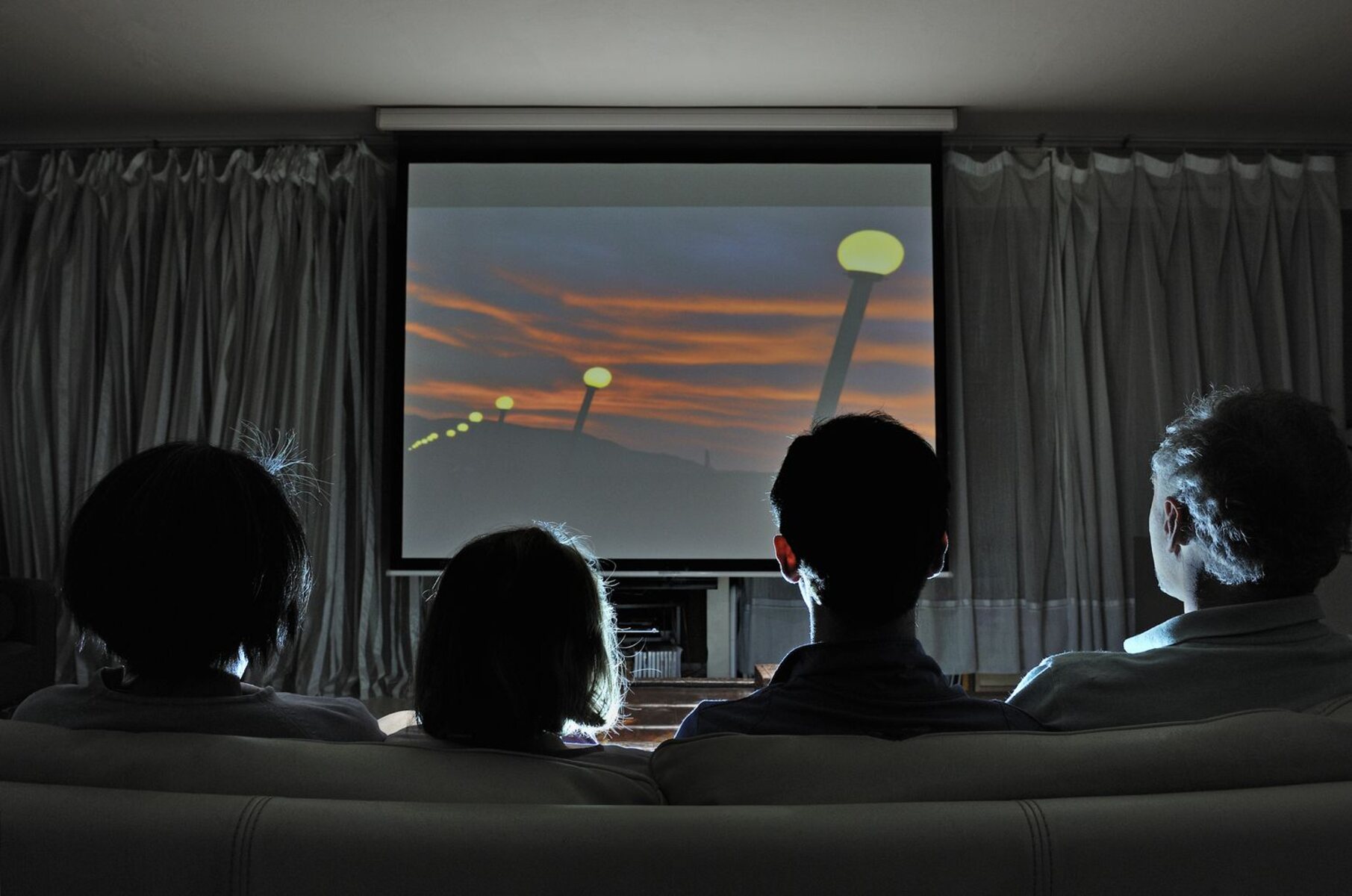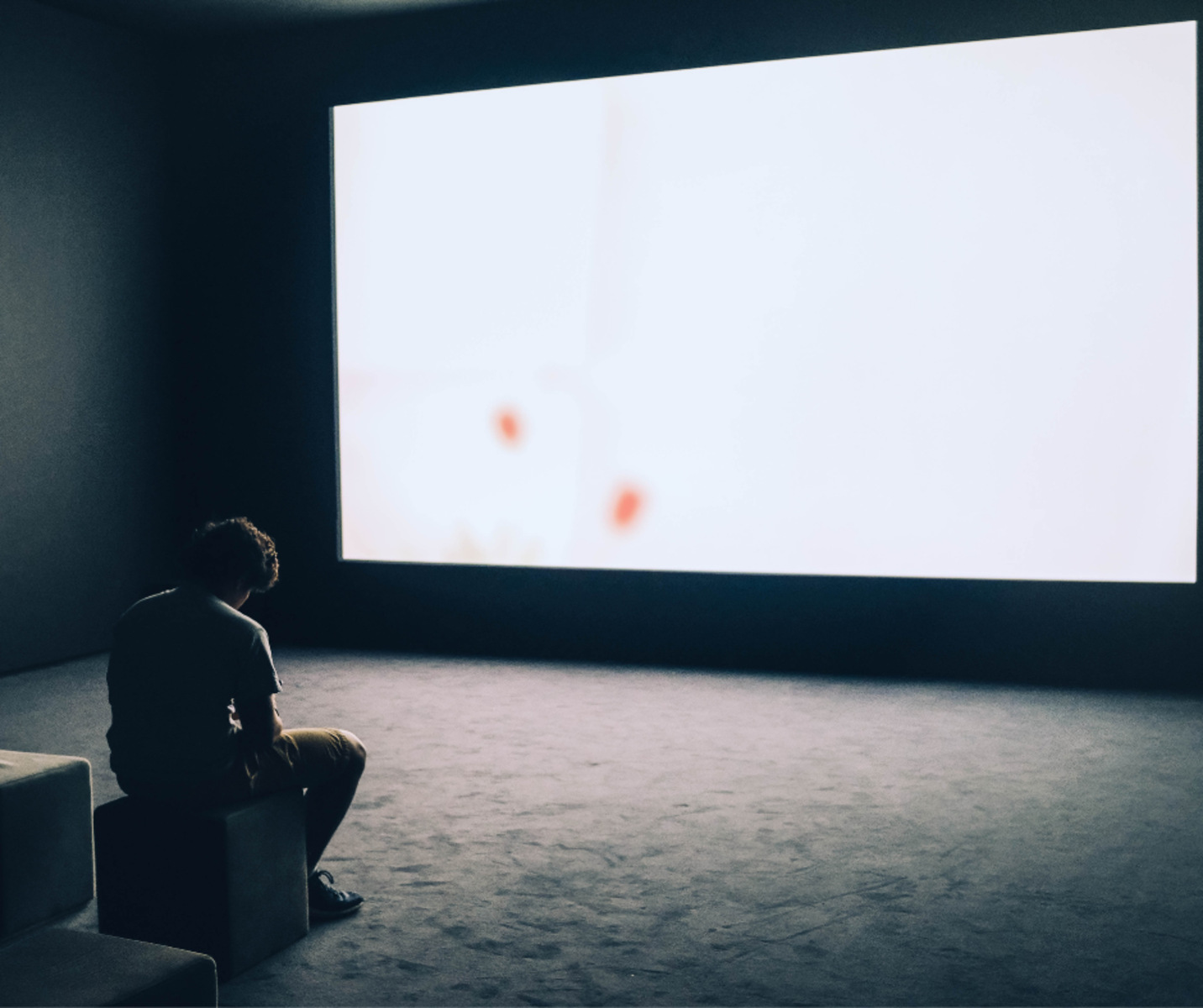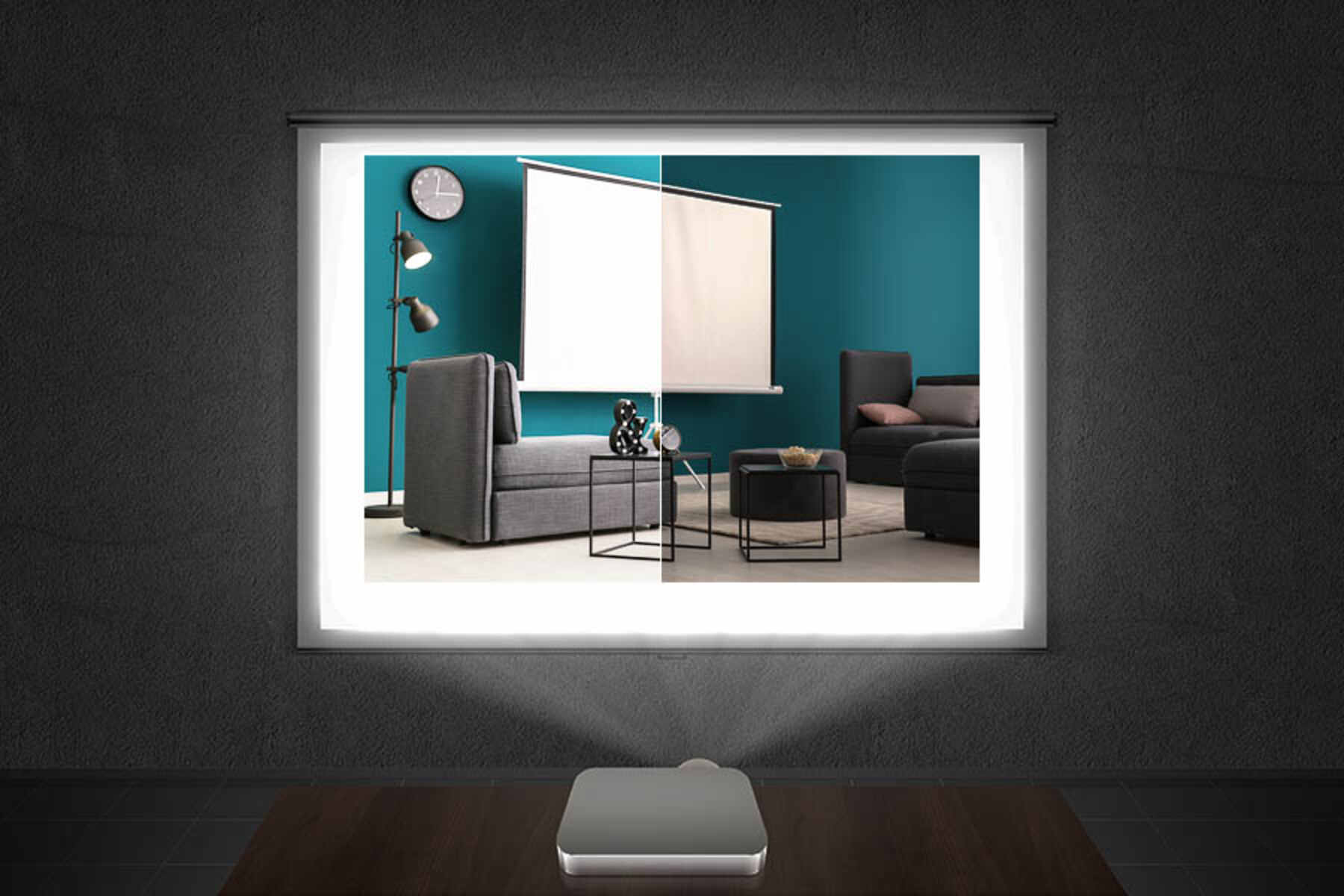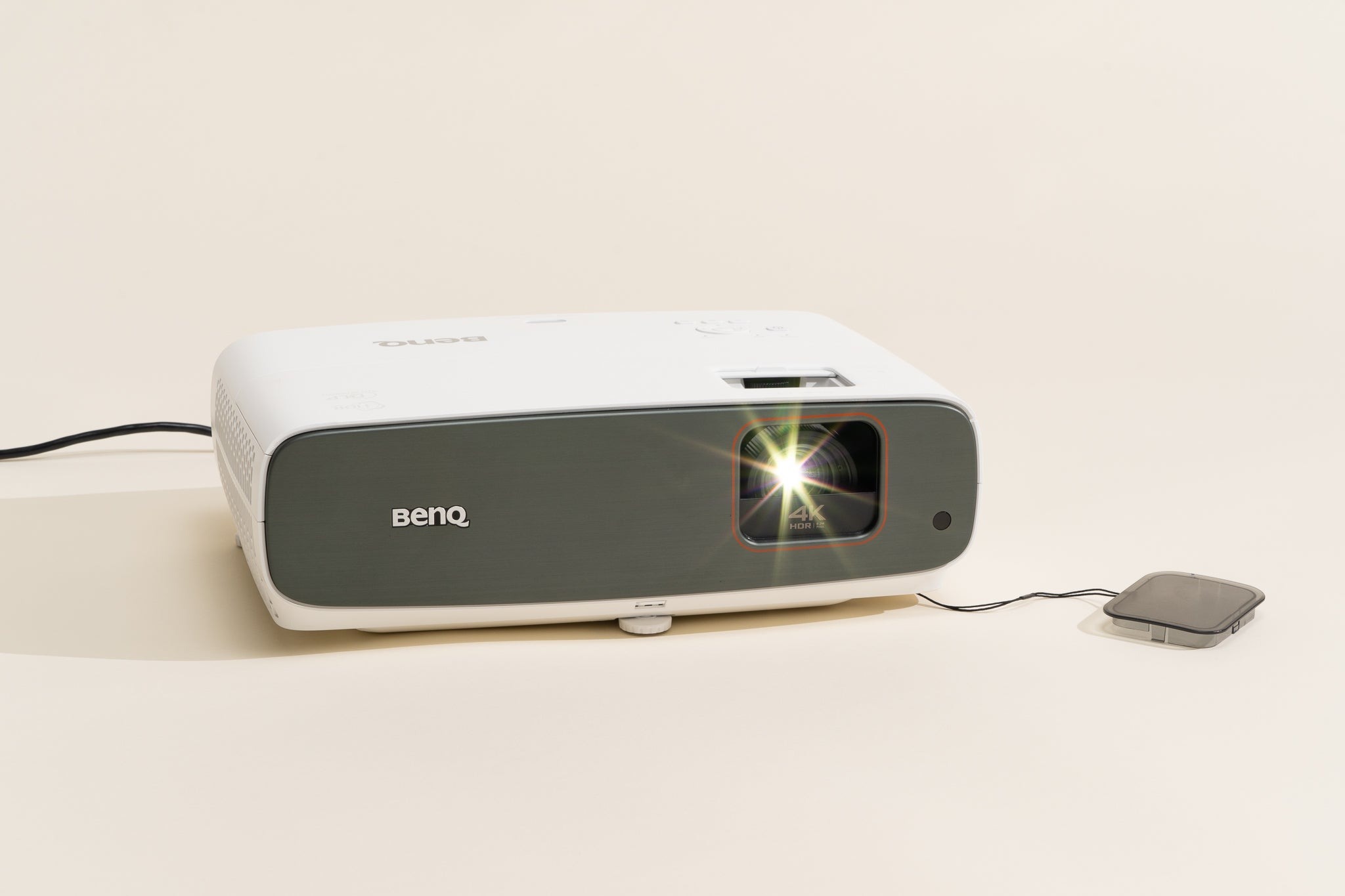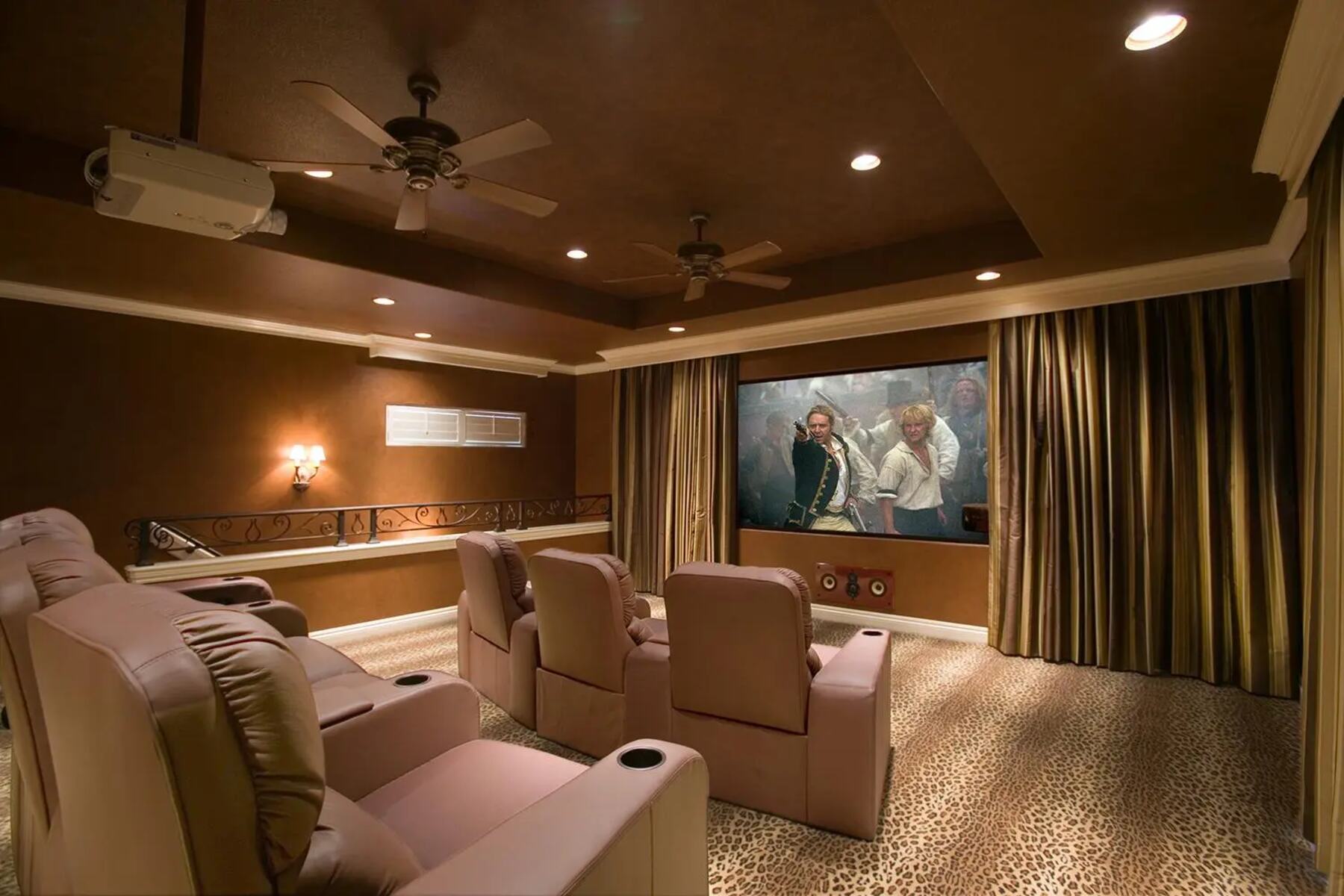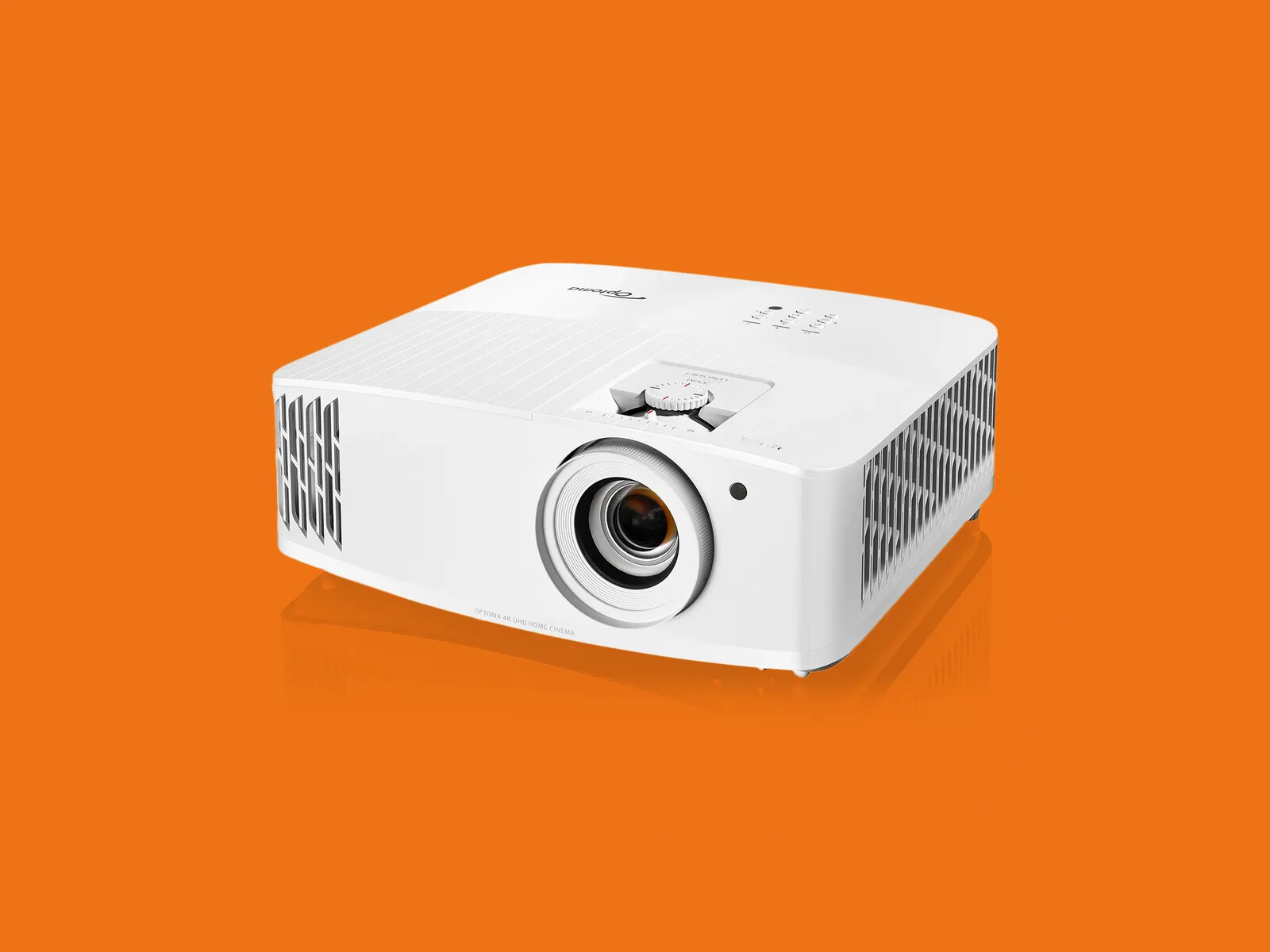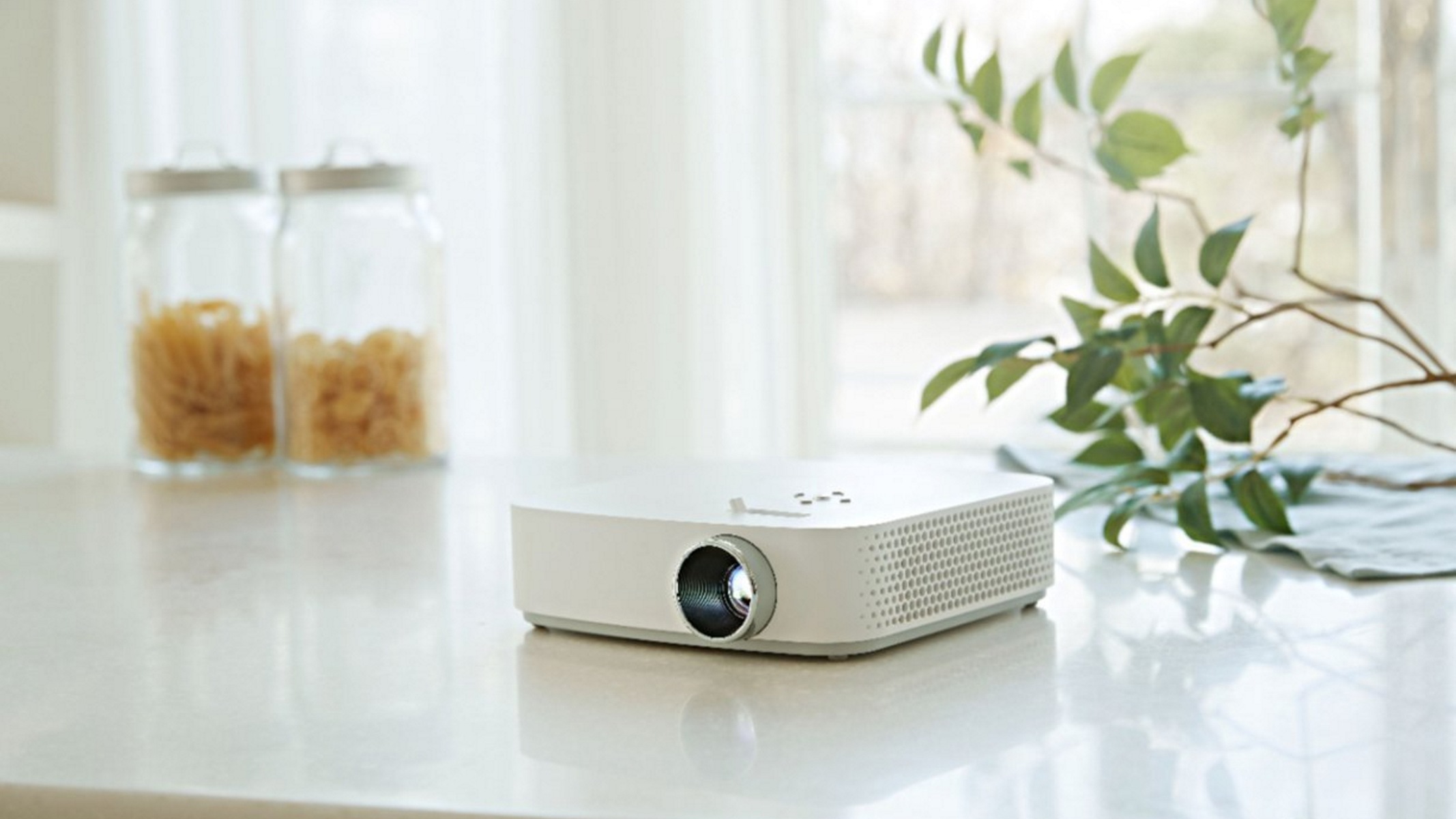Introduction
When it comes to projecting images or videos on a big screen, brightness is a critical factor that can make or break the viewing experience. Projector brightness affects the clarity, vibrancy, and overall quality of the projected content. Whether you are using a projector for business presentations, educational purposes, or home theater enjoyment, understanding how to measure and optimize projector brightness is essential.
In this article, we will explore the key factors that affect projector brightness and provide you with a step-by-step guide on how to measure the brightness of your projector accurately. We will also delve into the importance of contrast ratio, the impact of different projector technologies on brightness, and offer recommendations for maximizing brightness in various environments.
Before diving into the details, it’s crucial to note that projector brightness is typically measured in ANSI lumens. ANSI (American National Standards Institute) lumens is an industry-standard metric used to quantify the brightness output of projectors. Higher lumen values generally indicate brighter projectors that are suitable for environments with more ambient light.
Whether you are setting up a projector in a dimly lit conference room, a brightly lit classroom, or a dedicated home theater, understanding how to choose the right brightness level is key. Overly dim projections can result in a washed-out image, while excessively bright projections may cause eye strain or discomfort.
Now, let’s dive into the details and explore how you can accurately measure and optimize projector brightness for a superior viewing experience.
Key Factors Affecting Projector Brightness
Several factors play a crucial role in determining the overall brightness of a projector. Understanding these factors will help you make an informed decision when choosing a projector or optimizing the brightness settings:
- Light Source: The type of light source used in a projector significantly affects its brightness. Traditional projectors use lamps, while newer models incorporate LED or laser light sources. LED and laser projectors tend to produce higher brightness levels compared to lamp-based projectors.
- Lumen Output: The ANSI lumens rating of a projector indicates its brightness capabilities. Projectors with higher lumen ratings will generally produce brighter images. However, it is important to consider the environment where the projector will be used. A lower lumen rating may be sufficient for a dimly lit room, while a higher rating may be necessary for brighter environments.
- Image Size and Distance: The size of the projected image and the distance between the projector and the screen or surface can impact brightness. A larger image will spread the light output over a larger area, potentially reducing the perceived brightness. Similarly, placing the projector further away from the screen may result in a dimmer image.
- Ambient Light Conditions: The amount of ambient light present in the room can significantly affect the perceived brightness of a projected image. Brighter environments with more ambient light may require projectors with higher lumen outputs for optimal visibility and clarity.
- Screen Gain: The screen gain refers to the reflectivity of the projection surface. A higher screen gain can enhance brightness by reflecting a larger proportion of light back to the viewer. Consider using screens with higher gain for environments with limited ambient light or when using projectors with lower lumen ratings.
These key factors interact with each other, and finding the right balance among them is crucial to achieving optimal projector brightness for your specific requirements. Now that we understand the factors affecting projector brightness, let’s delve into the details of ANSI lumens and how to choose the right brightness level for your environment.
Understanding ANSI Lumens
ANSI lumens is the standard unit of measurement used to quantify the brightness output of projectors. It is an important spec that helps users determine the appropriate brightness level for their specific needs.
The ANSI lumens rating represents the amount of light emitted by the projector, measured in lumens, in accordance with the industry standards set by the American National Standards Institute (ANSI). This rating indicates the projector’s brightness capability and directly correlates to the perceived image brightness on the screen or surface.
It’s important to note that the ANSI lumens rating refers to the brightness output of the projector’s white light, which is the most critical factor when it comes to visibility and image quality. Brightness levels can vary significantly among different projectors, with lower-end models typically offering around 1000 to 2000 lumens and high-end models reaching up to 5000 lumens or more.
When considering ANSI lumens, it is essential to take into account your specific environment and viewing conditions. If you plan to use the projector in a dimly lit room or small space, such as a home theater, a projector with a lower ANSI lumens rating may be suitable. On the other hand, if you are projecting in a well-lit room or larger venue with ample ambient light, a higher ANSI lumens rating is recommended to ensure the projected image remains bright and vibrant.
It’s worth mentioning that projector technology has advanced over the years, allowing for improved brightness output even at lower ANSI lumens ratings. For example, newer LED or laser projectors often achieve higher brightness levels with lower wattage and smaller form factors than traditional lamp-based projectors.
When evaluating projectors based on ANSI lumens, it’s essential to consider other factors such as screen size, distance, and ambient light conditions. Consulting with a professional or reading expert reviews can provide further guidance in determining the optimal ANSI lumens rating for your specific use case.
Now that we have a better understanding of ANSI lumens, let’s move on to the next section where we will explore how to choose the right projector brightness for your environment.
Choosing the Right Brightness for Your Environment
Choosing the right brightness level for your projector depends on the specific environment in which it will be used. Consider the following factors when determining the optimal brightness:
- Ambient Light: Take into account the amount of ambient light present in the room where the projector will be used. If you have control over the lighting conditions and can create a dark or dimly lit environment, a lower ANSI lumens rating may be sufficient. However, if the room has a lot of natural or artificial light, it is advisable to opt for a projector with a higher ANSI lumens rating to compensate for the brightness loss caused by ambient light.
- Screen Size and Distance: The size of the projected image and the distance of the projector from the screen or surface can affect brightness. Larger screens and longer distances will require projectors with higher brightness levels to ensure the image remains clear and vibrant. Calculating the throw distance and screen size in relation to the projector’s ANSI lumens rating can help you determine the appropriate brightness for your setup.
- Content Type: Consider the type of content you will be projecting. If you primarily show videos or images with dark or low-contrast scenes, a higher ANSI lumens rating may not be necessary. However, if you frequently use the projector for presentations or displaying content with bright colors and high contrast, a projector with higher brightness will enhance the visual experience.
It’s important to strike a balance between brightness and image quality. While higher ANSI lumens ratings can provide brighter images, excessively bright projections can lead to eye strain and discomfort for viewers. Conversely, insufficient brightness may result in a washed-out image, especially in environments with significant ambient light.
Ultimately, the optimal brightness level for your environment will depend on a combination of these factors. It’s helpful to consult with a professional or reference projector specifications and recommendations specifically tailored for your intended use case.
Now that we understand the factors involved in choosing the right brightness for your projector, let’s move on to the next section where we will explore how to measure the brightness of a projector accurately.
Measuring Projector Brightness: Step-by-Step Guide
Measuring the brightness of a projector accurately is essential to ensure optimal viewing experience and make informed decisions. Here is a step-by-step guide to help you measure projector brightness:
- Select a Suitable Environment: Choose a location for measuring projector brightness that closely resembles the intended usage environment. Consider factors such as ambient light conditions, screen size, and distance.
- Set Up the Projector: Follow the manufacturer’s instructions to properly set up and position the projector. Ensure that the projection image is focused and aligned correctly on the screen or surface.
- Calibrate Settings: Adjust the projector settings, including brightness, contrast, and color, as per your personal preference or the recommended settings. Be consistent with these settings throughout the measurement process.
- Place a Light Meter: Use a light meter specifically designed for measuring the brightness of projectors. Position the light meter at the center of the projected image, at the same distance from the screen as the projector lens.
- Avoid Direct Light Exposure: Ensure that the light meter is not exposed to direct light sources such as windows or lamps, which can interfere with the accuracy of the measurement. Use shading or curtains to control the ambient light if needed.
- Take Multiple Measurements: Take several readings using the light meter to account for any variations in brightness across the projected image. This will provide a more accurate average brightness value.
- Calculate the Average Brightness: Record all the brightness readings and calculate the average value to determine the projector’s brightness level. This average value will give you a more reliable representation of the projector’s overall brightness performance.
By following these steps, you can measure the brightness of your projector with greater accuracy. Remember to repeat the measurement process if you make any significant changes to the projector’s setup, settings, or environment to ensure up-to-date and accurate measurements.
Now that we know how to measure projector brightness, let’s explore the role of contrast ratio in determining the overall brightness and image quality of a projector.
The Role of Contrast Ratio in Projector Brightness
While ANSI lumens is the standard measurement for projector brightness, another crucial factor to consider is the contrast ratio. The contrast ratio refers to the difference between the brightest whites and the darkest blacks that a projector can display. Although it is not a direct measure of brightness, it greatly influences the perceived image quality and overall visual experience.
The contrast ratio plays a significant role in determining the depth and clarity of images projected by a projector. A higher contrast ratio implies a wider range of brightness levels between whites and blacks, resulting in more vibrant and lifelike images. It enhances the image’s visual impact, making details stand out and colors appear more vivid.
When it comes to projector brightness, a high contrast ratio is desirable as it enables the projector to produce images with better clarity and depth. However, it’s important to note that contrast ratio and brightness are independent factors that should be evaluated separately.
A projector with a high ANSI lumens rating may exhibit brighter whites, but without a sufficient contrast ratio, the image may lack the necessary depth and richness. This is particularly noticeable when projecting in environments with ambient light or when displaying content with darker scenes.
It’s worth mentioning that contrast ratios are often expressed as either a static ratio or a dynamic ratio. The static contrast ratio is measured by comparing the brightest white to the darkest black in a static image. On the other hand, the dynamic contrast ratio incorporates real-time adjustments based on the content being displayed, producing enhanced contrast levels.
In summary, while ANSI lumens determines the overall brightness output of a projector, the contrast ratio plays a pivotal role in enhancing image quality and perceived brightness. A high contrast ratio can significantly improve the projector’s ability to display vibrant and lifelike images with depth and clarity.
Now that we understand the importance of contrast ratio, let’s explore how different projector technologies can affect brightness performance.
How Different Projector Technologies Affect Brightness
Projector technology plays a crucial role in determining the brightness performance and capabilities of a projector. Different technologies have varying efficiencies and characteristics that impact overall brightness. Let’s take a closer look at how different projector technologies affect brightness:
- Lamp-Based Projectors: Traditional lamp-based projectors have been widely used for many years. These projectors use high-intensity lamps as their light source. While they can deliver bright and vibrant images, lamp-based projectors tend to have limitations in terms of lamp life, color accuracy, and long-term brightness stability. The brightness output of lamp-based projectors can gradually diminish as the lamp ages.
- LED Projectors: LED projectors have gained popularity due to their energy efficiency and longevity. LED technology offers a more stable brightness output over time compared to lamp-based projectors. LED projectors can produce impressive brightness levels while maintaining better color accuracy. They are also cooler in operation and have a longer lifespan.
- Laser Projectors: Laser projectors represent the latest advancement in projector technology. These projectors utilize laser diodes as their light source. Laser technology offers exceptional brightness levels, long-lasting performance, and superior color accuracy. Laser projectors are known for their ability to produce vibrant and high-contrast images, making them ideal for professional, commercial, and large venue applications.
It’s important to note that while LED and laser projectors can produce brighter images at lower ANSI lumens ratings compared to lamp-based projectors, the overall brightness perception can be influenced by other factors such as contrast ratio and image processing capabilities.
Additionally, the efficiency and performance of projector technologies can vary depending on the manufacturer and model. It’s essential to consider the specific specifications and features of individual projectors when evaluating their brightness capabilities.
By understanding how different projector technologies affect brightness, you can make an informed decision when selecting a projector that will meet your brightness requirements for specific applications and environments.
Next, we will provide recommendations for maximizing projector brightness in various scenarios.
Recommendations for Maximizing Projector Brightness
To ensure you are getting the most out of your projector and maximizing its brightness, consider the following recommendations:
- Optimize Ambient Light: Minimize the amount of ambient light in the room where the projector is being used. Close curtains or blinds, turn off unnecessary lights, and choose a dedicated space with controlled lighting conditions. This will allow the projected image to appear brighter and more vibrant.
- Select the Right Projection Surface: Choose a projection surface with appropriate screen gain. A screen with higher gain reflects more light back to the viewer, resulting in increased perceived brightness. However, be cautious not to select a screen with too high of a gain, as this can negatively impact image quality and viewing angles.
- Optimal Projection Distance and Screen Size: Ensure you have positioned the projector at the correct distance from the screen and selected the appropriate screen size. Following the projector manufacturer’s guidelines for throw distance and screen size will help achieve optimal brightness levels and image clarity.
- Regularly Clean and Maintain: Dust accumulation on the projector lens or internal components can reduce brightness output. Regularly clean the lens, air vents, and filters to prevent dust buildup and ensure optimal performance.
- Choose High-Quality Content: High-quality content with vibrant colors and contrast will enhance the overall brightness perception. Opt for HD or 4K content that is well-lit and properly encoded for optimal image quality.
- Calibrate Brightness and Contrast: Adjust the brightness and contrast settings of the projector to suit the ambient light conditions and enhance overall image quality. Consider using test patterns or calibration tools to ensure accurate calibration.
- Consider Image Processing Features: Be aware of the image processing features offered by your projector, such as dynamic contrast, color enhancement, or gamma correction. These features can help optimize brightness and improve image quality in specific scenarios.
By following these recommendations, you can maximize the brightness performance of your projector and create a superior viewing experience in various environments.
Now that we have explored ways to maximize projector brightness, let’s conclude our article with a summary of the key points discussed.
Conclusion
Understanding how to measure and optimize projector brightness is essential for achieving the best possible visual experience. By considering key factors such as light source, ANSI lumens, screen size, ambient light conditions, and contrast ratio, you can make informed decisions when selecting a projector and adjusting its settings to maximize brightness.
Measuring projector brightness accurately involves selecting a suitable environment, calibrating settings, using a light meter, and calculating average values. This ensures that you have an accurate representation of the projector’s brightness performance.
Contrast ratio, while not directly related to brightness, is equally important when it comes to image quality. A higher contrast ratio enhances the depth and clarity of images, contributing to a more immersive viewing experience.
Different projector technologies, such as lamp-based, LED, and laser, have unique characteristics that impact brightness. LED and laser projectors often offer better brightness stability, color accuracy, and overall performance compared to traditional lamp-based projectors.
To maximize projector brightness, it is recommended to optimize the ambient light conditions, select the right projection surface, maintain and clean the projector regularly, choose high-quality content, calibrate brightness and contrast settings appropriately, and take advantage of image processing features available on your projector.
By following these recommendations, you can ensure that you make the most of your projector’s capabilities and create a visually stunning and immersive experience, whether it be for business presentations, educational purposes, or home theater enjoyment.
Now armed with the knowledge of projector brightness, you can confidently select the right projector and optimize its settings to create an exceptional viewing experience tailored to your specific needs and preferences.







